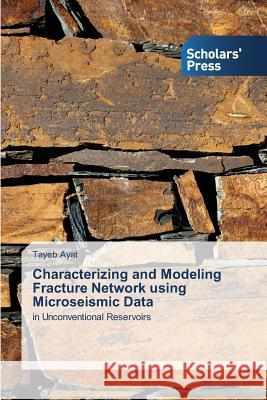Characterizing and Modeling Fracture Network using Microseismic Data » książka
Characterizing and Modeling Fracture Network using Microseismic Data
ISBN-13: 9783639705072 / Angielski / Miękka / 2013 / 188 str.
In this book, we present a comprehensive workflow for characterizing and modeling a fracture network in unconventional reservoirs, using microseismic data. The methodology is based on combination of several mathematical and artificial intelligent techniques. This book contributes to scholarly knowledge base on the modeling fractured reservoirs in several ways; unlike the existing methods, the new approach is not dependent on the location of events. It offers an improved procedure to create compressional and shear velocity models as a preamble for delineating anomalies and map structures of interest and to correlate velocity anomalies with fracture swarms. It also offers an effective way to obtain the fractal dimension of microseismic events and identify the pattern complexity, connectivity, and mechanism of the created fracture network. In final chapter, we Introduce a newly developed MDFN approach that allows to create a discrete fracture network model using only microseismic data with potential cost reduction. It also imposes fractal dimension as a constraint on other fracture modeling, which increases the visual similarity between the modeled networks and the real network.
In this book, we present a comprehensive workflow for characterizing and modeling a fracture network in unconventional reservoirs, using microseismic data. The methodology is based on combination of several mathematical and artificial intelligent techniques. This book contributes to scholarly knowledge base on the modeling fractured reservoirs in several ways; unlike the existing methods, the new approach is not dependent on the location of events. It offers an improved procedure to create compressional and shear velocity models as a preamble for delineating anomalies and map structures of interest and to correlate velocity anomalies with fracture swarms. It also offers an effective way to obtain the fractal dimension of microseismic events and identify the pattern complexity, connectivity, and mechanism of the created fracture network. In final chapter, we Introduce a newly developed MDFN approach that allows to create a discrete fracture network model using only microseismic data with potential cost reduction. It also imposes fractal dimension as a constraint on other fracture modeling, which increases the visual similarity between the modeled networks and the real network.











